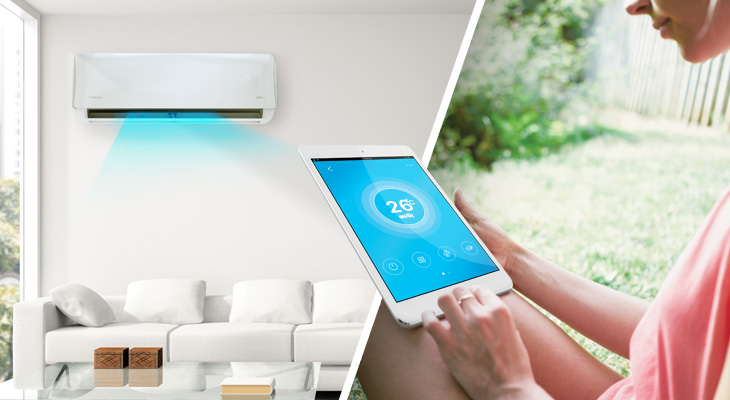Development of smart Raspberry Pi-based air conditioner controller
Project abstract
Buildings belong to the large energy consumers class and account for 40% of worldwide primary energy consumption. According to the International Energy Agency, the air conditioning (AC) units account for an estimated 20% of energy usage in buildings [1]. Improvement of energy efficiency of AC units thus presents an opportunity to achieve significant energy savings on a global scale. Nowadays, with the availability of cheap sensors and computer resources the implementation of smart control algorithms based on large sets of data to learn and predict the user behavior and advanced control and estimation algorithms was never easier.
The implementation of the device is divided into the following mini projects. They could be studied independently (only certain mini project), sequentially (mini project by mini project) or could be divided between a team of students (every student one task), based on the students preferences.

Mini projects
- As a first step towards the smart AC control device, it is necessary to define required hardware and software configuration which enables the two-way communication with the AC unit. Smart AC control device should also have the possibility to measure relevant comfort parameters such as temperature, CO2 level, humidity and pressure. After the device is assembled and communication between the AC unit and device is decoded it is required to ensure automatic two-way data communication between the devices. All relevant data should be stored locally to the database.
- As an upgrade of the developed smart AC device it is necessary to develop a mobile or web application. The application should have the possibility to graphically present current zone comfort conditions and give user the possibility for remote AC device control. Also, the user should have the possibility to vote on the current comfort conditions. All user votes should be matched with current comfort conditions and saved to the database. The voting on comfort opens the possibility to utilize the machine learning (ML) algorithms to learn and predict the user comfort demands, which could then be integrated into the smart control algorithm to improve the user satisfaction. In case multiple users use the same space, based on the collected votes and learned ML models, advanced control algorithms would strive to achieve global comfort consensus instead of fulfilling individual user comfort requests. The application should enable voting only for users which are currently present in the considered building zone.
- As a second possible update it is required to connect the developed platform with the free weather forecast sources available online. Every time new weather forecast appears on the online site it should be fetched to the Raspberry Pi and stored to the database. The availability of weather forecast enables development of better control decisions and more precise comfort models. To have a reference point and to be able to determine the forecast precision, current measurements of the outside weather conditions could be read from a LARES meteorological station.
- Nowadays, data present one of the most important assets. After a certain batch of historical data is available it is possible to learn mathematical models suitable for advanced control algorithm synthesis and models for predicting and planning energy consumption. Such models could then be utilized for development of smart IoT-driven control algorithms. Some more complex control algorithms could be implemented in cloud while the simpler one should be executed as Python routines on Raspberry. If available, the developed smart control algorithms should integrate the user comfort models and weather forecast developed as a part of previous tasks.
Additional information
- Number of students: 1 - 4
- Keywords: smart AC control, Raspberry Pi, advanced control, IoT driven control, web app, mobile app
- Useful links:
[1] Global air conditioner stock, 1990-2050 (Technical report). International Energy Agency. November 19, 2009. Archived from the original on February 18, 2021. Retrieved May 12, 2021.



 Pristupačnost
Pristupačnost